Craeft at Cerfav
Bridging Tradition and Technology
|
|
We are excited to bring you the latest developments from the Craeft project, where the timeless art of craftsmanship meets the cutting-edge world of digital technology.
|
|
|
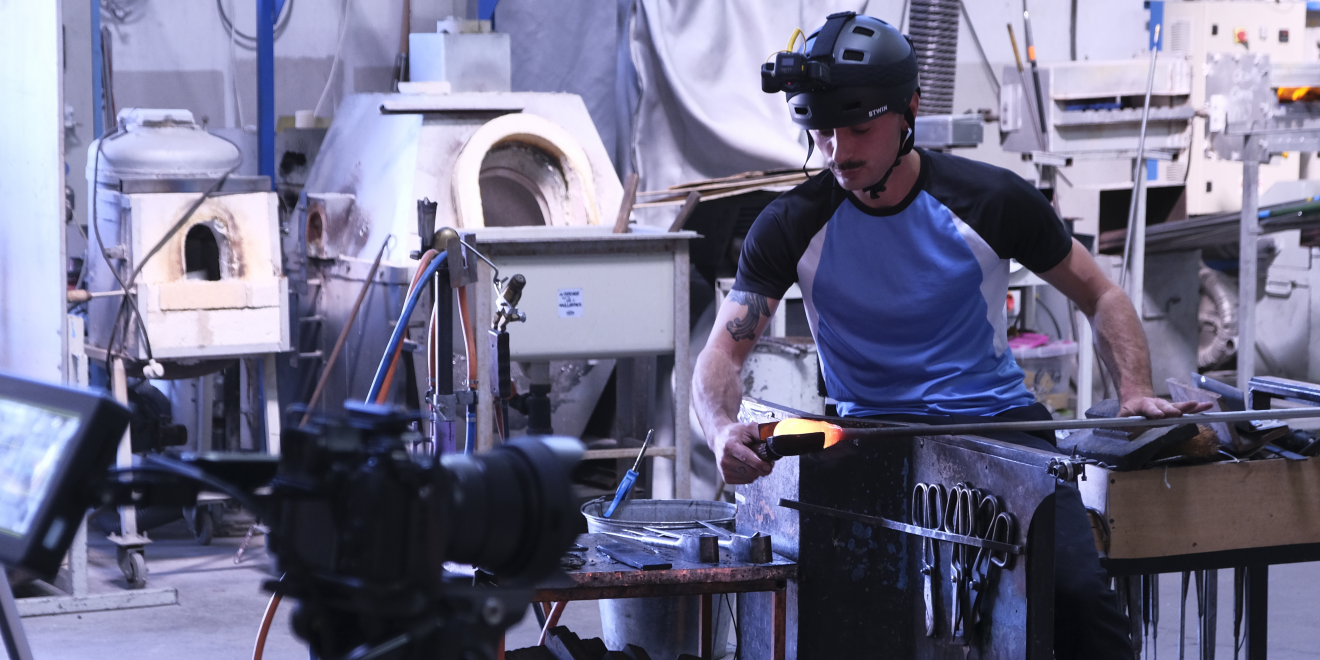
|
|
During the late September the Craeft partners, from ten European countries and diverse backgrounds ranging from anthropologists, cognitive, digital and AI scientist, experts in crafts education and valorisation, met at Cerfav, the European Center for Research and Training in Glass Arts, nestled in the historic town of Vannes-le-Châtel, situated in the region of Lorraine in northeastern France.
|
|
The primary objective of this meeting and exchange was to explore the activities conducted within Cerfav workshops, observe the methods and techniques employed by glass artisans and students, and conduct sessions dedicated to digitising these artisanal gestures. Importantly, this marked the first implementation of the multidisciplinary Craeft protocol, adding an exciting dimension to the endeavour.
|
|
|
|
|
|
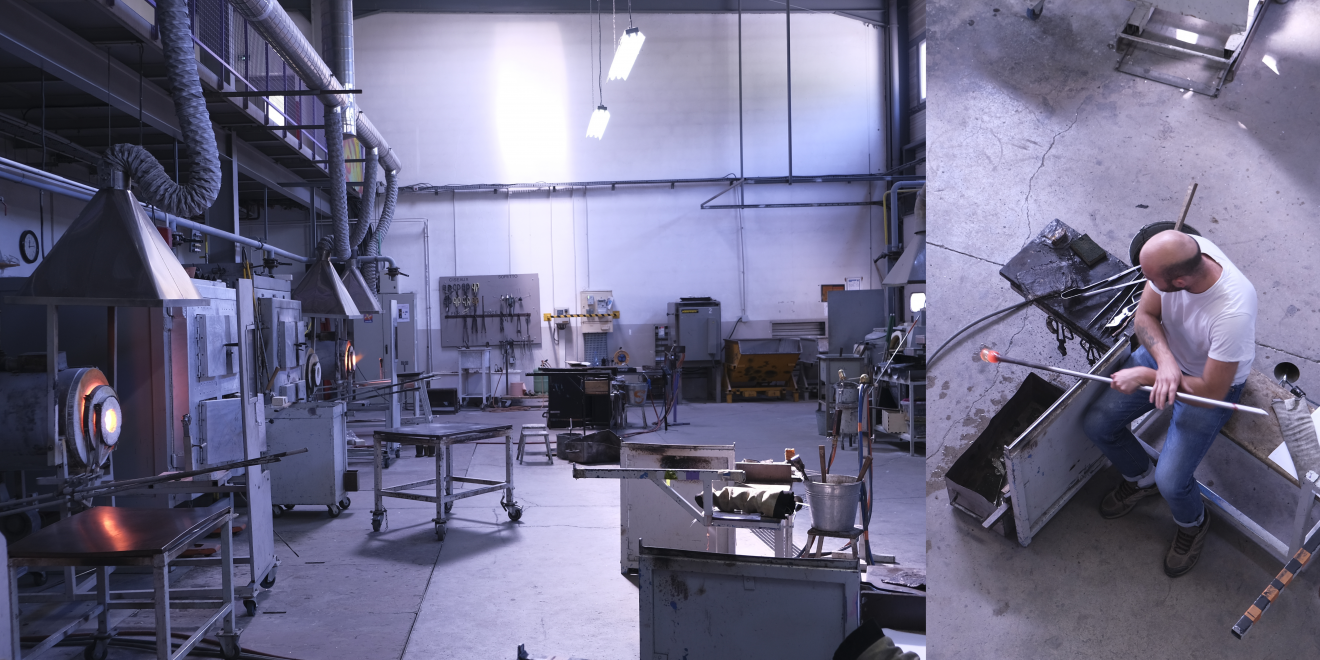
|
|
During the Craeft consortium's stay at Cerfav, partners dedicated the majority of their time to the glass workshops, where they recorded and sought to comprehend the intricate craft gestures involved in both glass blowing and glass sculpted with a blowtorch.
|
|
To offer you a glimpse into what this recording process entailed, we invite you to take a behind-the-scenes sneak peek. However, it's important to note that while the video can convey much, it cannot fully replicate the experience. What it lacks is the warmth of the glass blowing workshop, where the intense heat is a constant companion. Moreover, it cannot convey the tactile sensation of the protective shoes encasing your feet as you immerse yourself in this captivating craft.
|
|
|
|
|
|
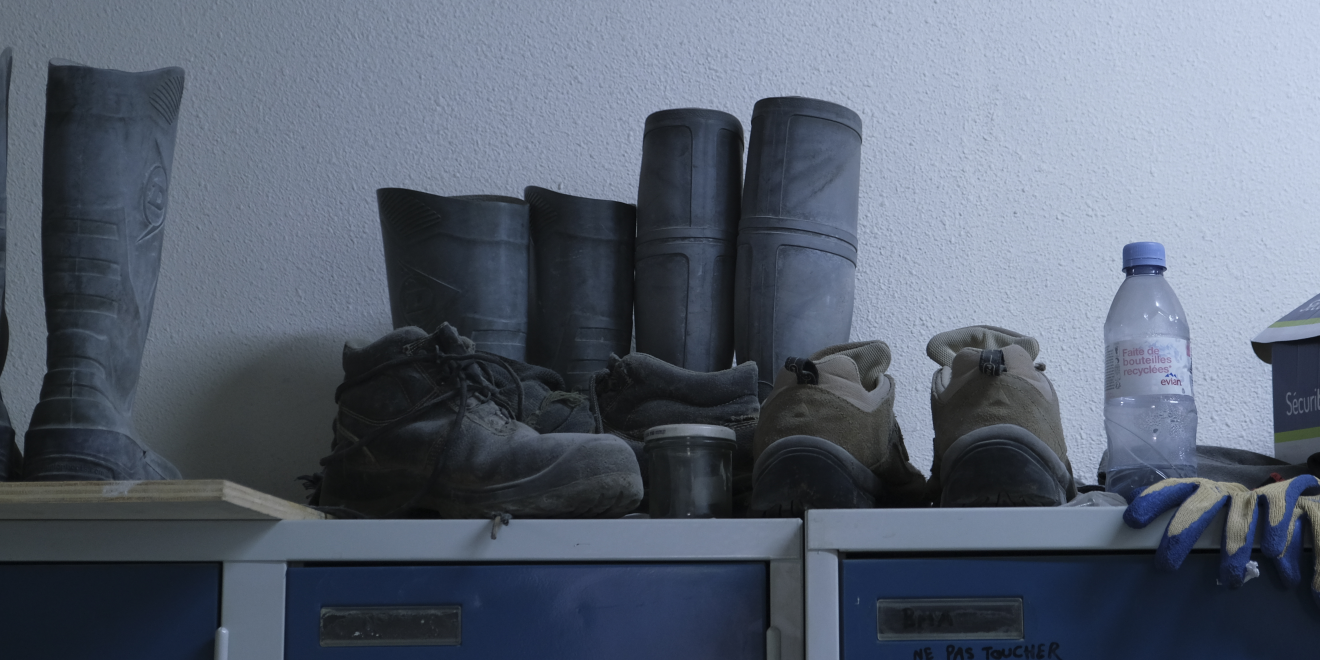
|
|
|
|
To capture, understand, and digitise the intricate gestures of glass craftsmanship while establishing a uniform method for future applications across various Craeft crafts, Arnaud Dubois, an anthropologist affiliated with Cnam, and Sotiris Manitsaris, a research engineer at ARMINES, are collaborating together in developing and initial testing phases of a comprehensive research protocol.
|
|
This protocol was for the first time put into practice during our recent stay at Cerfav. It entailed immersive recording sessions with two highly skilled artisans: Johanna Pierret, a master of blowtorch, and Maxime Rosseel, a renowned glassblower at Cerfav.
|
|
|
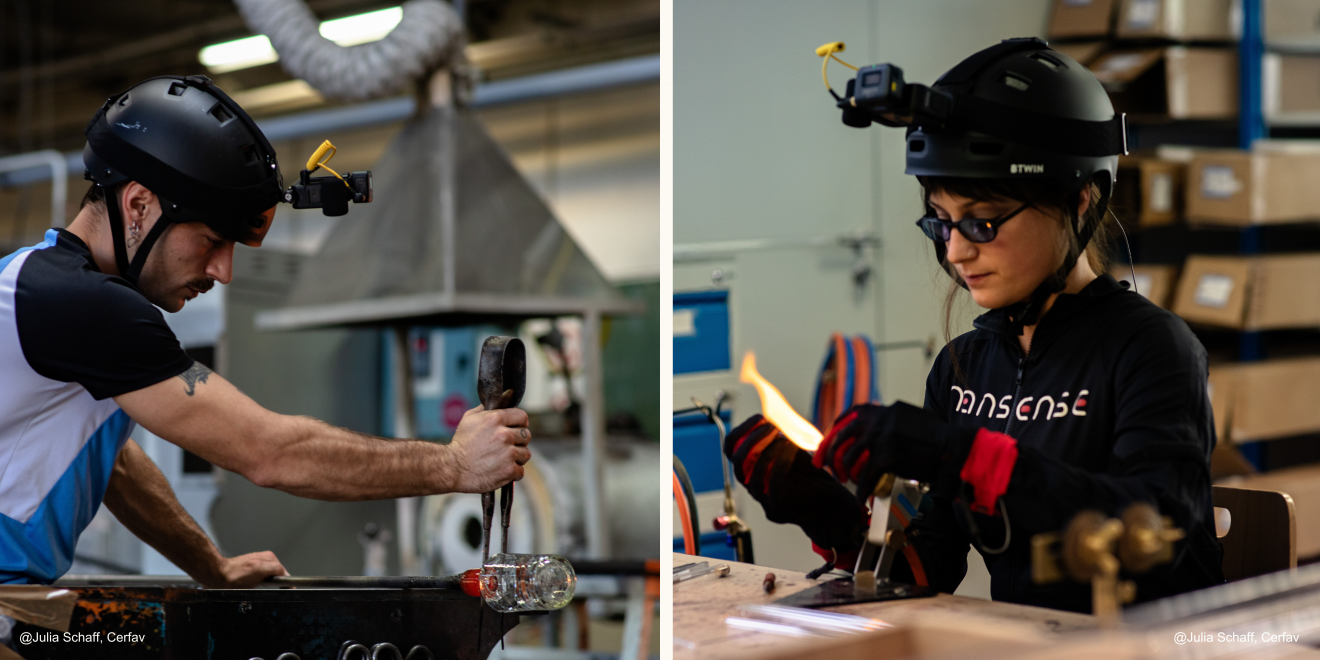
|
|
|
To clarify the initial developments of the research protocol for the public, Mad'in Europe, CERFAV, and other CRAEFT partners together with Frédéric Demoisson, the blowtorch master, hosted a live Twitch event that provided a detailed and comprehensive explanation of the protocol.
|
|
|
|
|
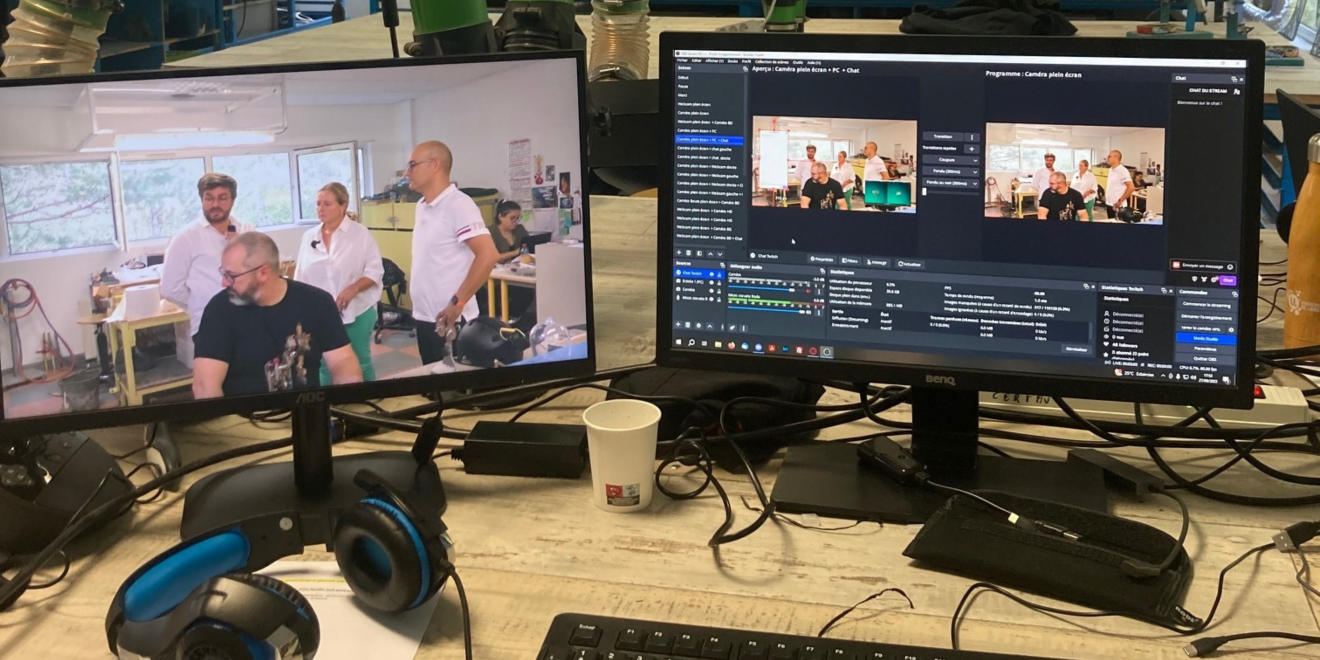
|
|
|
|
What sets this protocol project apart as truly unique and innovative is its comprehensive and collaborative approach, combining anthropology and computer science.
|
|
At its core, this protocol employs the egocentric recordings, which capture the intricate handwork of craft professionals from a first-person perspective. These videos serve as a powerful tool, enabling experts to objectively evaluate their work and gain awareness of their tacit knowledge, which they typically perform instinctively.
|
|
|
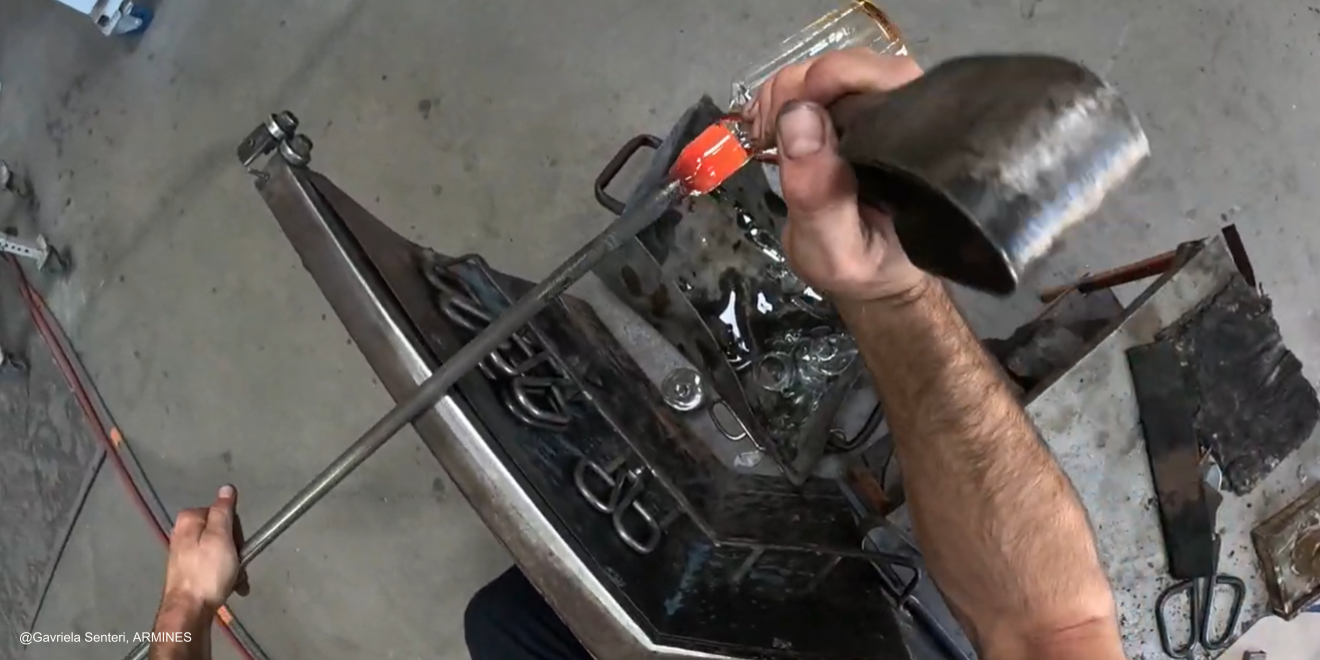
|
|
Moreover, these recordings empower craft professionals to pinpoint areas for improvement and further advance their skills. They can use these recordings for self-guided learning, fostering continuous refinement of their techniques and skill enhancement. Notably, egocentric recording also holds the potential to facilitate knowledge transfer, allowing professionals to effectively document and share their expertise with apprentices and colleagues who are also based in remote areas.
|
|
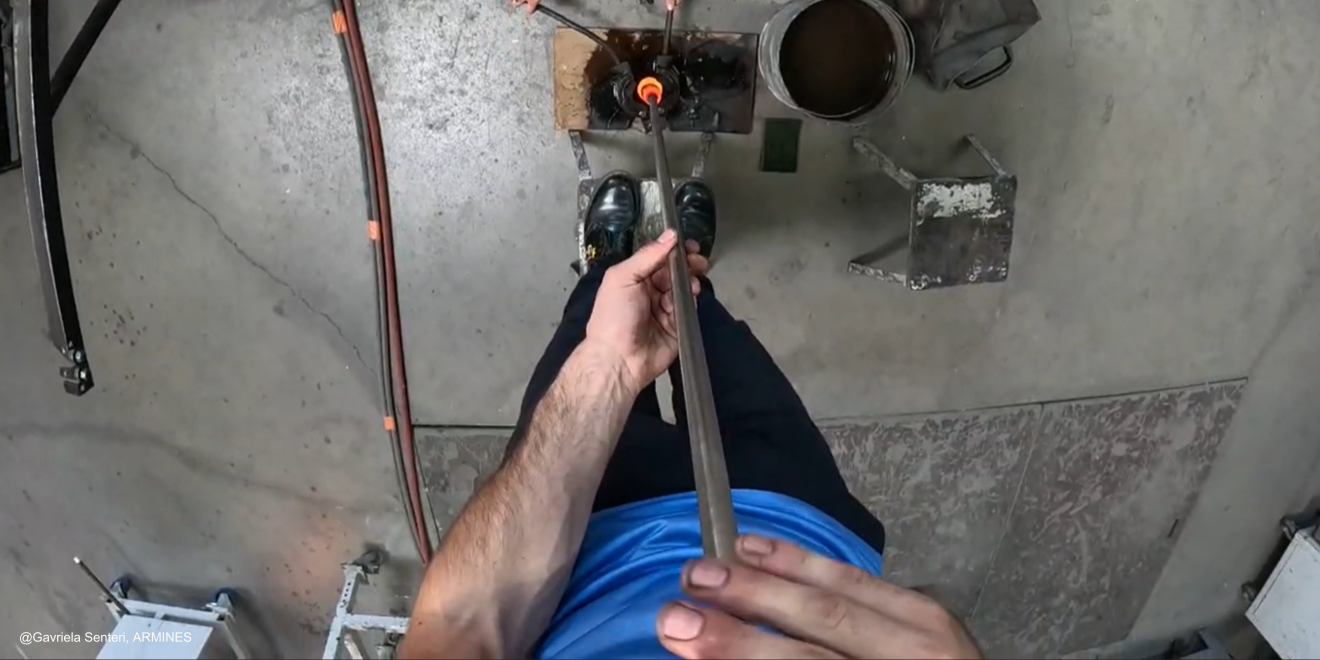
|
Another vital component of this protocol involves conducting interviews both before and after the recording sessions. The post-recording interviews, known as video elicitation, play a pivotal role in promoting self-awareness and boosting confidence. As craft masters verbalise their gestures, they become more attuned to their own skills and the knowledge embodied in their actions. This, in turn, contributes to a richer overall understanding of these specific and complex gestures.
|
|
|
|
To advance the development and enhancement of the research protocol, Craeft partners have in the pipeline additional pilot tests. These tests will facilitate the evaluation of the protocol's applicability to various crafts within the selected Craeft crafts, including marble carving, Aubusson tapestry weaving, silversmithing etc. Hence, stay tuned for the latest updates on our progress and upcoming steps.
|
|
|
|
|
|
|
|
|
|